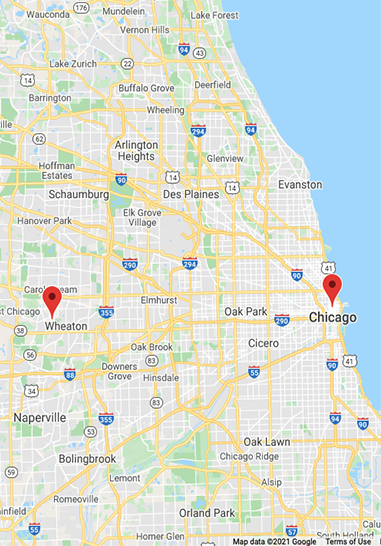No Crust and Lots of Fuss: 3 Trademark Takeaways from the Uncrustables Food Fight
10.24.25
The J.M. Smucker Company’s recent litigation against popular grocery chain Trader Joe’s has been spreading in the news — and things are getting sticky.
Smucker’s alleges that Trader Joe’s crustless peanut butter and jelly sandwiches infringe its Uncrustables trade dress and trademark rights. According to the complaint, Trader Joe’s is selling a “round, crustless sandwich with a crimped edge” that features “a bite taken out of it on the packaging” — imagery Smucker’s says mimics its Uncrustables design. Smucker’s also asserts ownership of “the color blue in connection with sandwich products.” A bold assertion? Perhaps.

For now, you’re the judge: Would you think the two products emanate from the same source?
While time will tell how this food fight plays out, there’s plenty for brand owners to chew on. Here are three key takeaways from the case:
1. The Recipe for Trade Dress Protection
Trade dress protection is an often-overlooked form of intellectual property that safeguards the overall look and feel of a product, provided its features are nonfunctional and have become distinctive to consumers. Why? Because over time, a product’s visual identity can become just as valuable as its brand name.
However, functionality can spoil the recipe. Features essential to a product’s use, performance or cost efficiency generally cannot be protected under trade dress law. Additionally, while a product’s packaging can be afforded trade dress protection (think the fluted curvature of a classic Coke® bottle) the product itself generally cannot. Thus, when seeking protection, brands should focus on fanciful and unique packaging elements that visually distinguish the product from competitors — not those that serve a practical or utilitarian purpose (that’s where patent rights come into play).
2. The Fine Line Between a Free Market and Infringement
In today’s “dupe culture,” the question often arises: what counts as fair competition versus infringement? The answer depends on how strong and well-defined your intellectual property rights are.
Competition in the marketplace benefits the public by preventing monopolies on everyday products and ensuring consumers have choices. However, when a company holds valid IP rights, those rights must be properly enforced. In this case, is Smucker’s overreaching by attempting to capture rights to any circular, crustless sandwich, or is there a risk of consumers confusing the source of crustless sandwiches based on that appearance, and thus infringement?
3. The Importance of Maintaining a Strong IP Portfolio and Applying Rights Correctly
Smucker’s has an extensive IP portfolio, but even large companies can have gaps in their IP rights. The original patent protecting the crustless sandwich design was granted on December 21, 1999. More than 20 years later, that patent has expired, therefore placing the once-protected design in the public domain.
Now, Smucker seems to be relying on its remaining trademarks and trade dress claims to fill that gap. This situation illustrates how critical it is for companies to maintain and strategically refresh their IP portfolios over time.
Final Thoughts
This case is about more than crustless sandwiches; it’s a valuable lesson for brand owners. Effective IP strategies extend beyond registering marks or patents; they require thoughtful application of those rights throughout the marketing, product design and development stages.
This case serves as a reminder that intellectual property protection isn’t just about defending existing rights but planning ahead to preserve them.
Take a Proactive Approach to Your IP Protections
If your business designs, develops or markets consumer products, now’s the time to make sure your intellectual property is fully protected. The Aronberg Goldgehn IP team can help you assess potential risks, identify gaps and strengthen your portfolio — before competitors take a bite.



